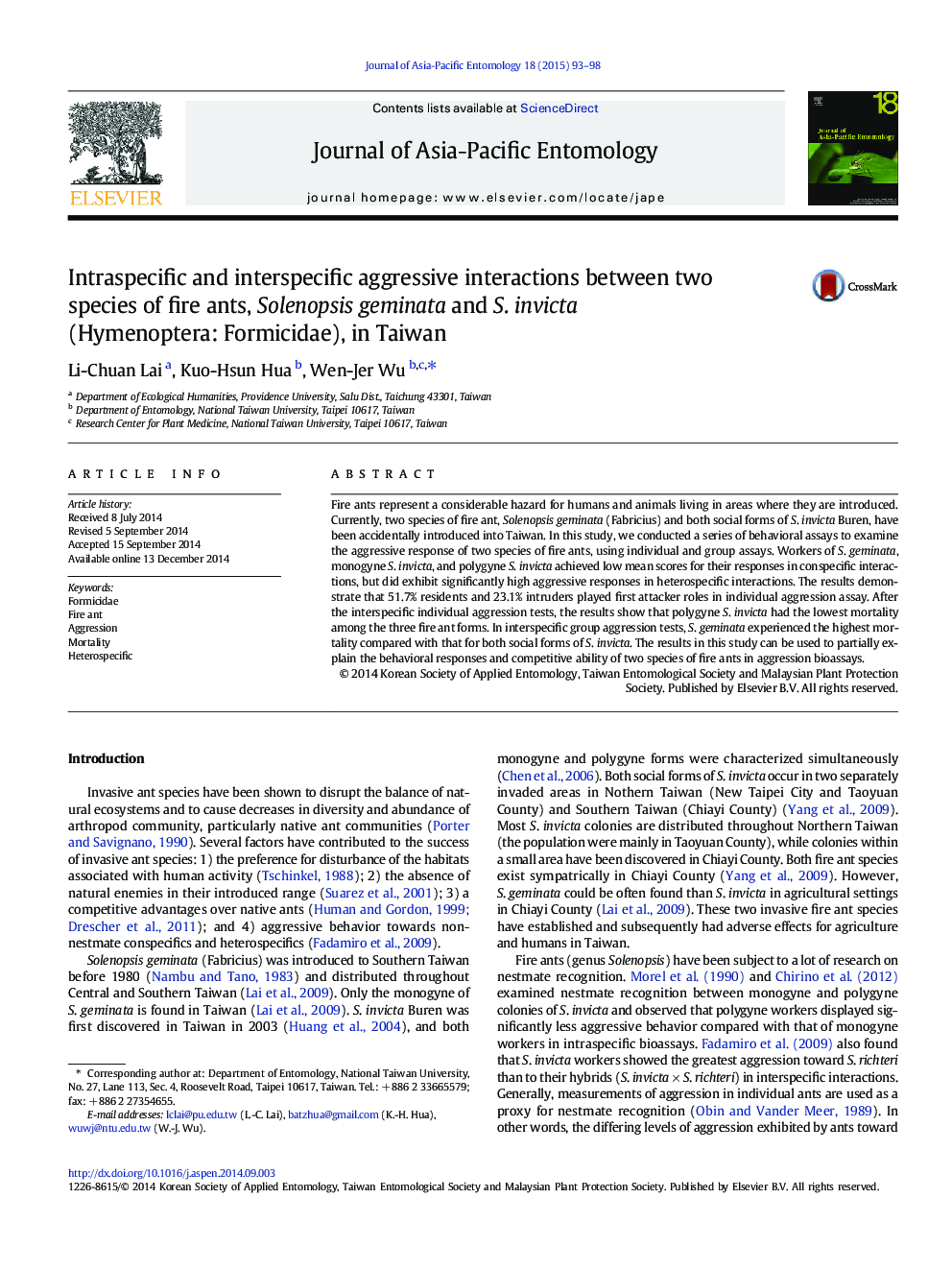| Article ID | Journal | Published Year | Pages | File Type |
|---|---|---|---|---|
| 4524622 | Journal of Asia-Pacific Entomology | 2015 | 6 Pages |
•We examine the aggressive response of fire ants, using individual and group assays.•Fire ant workers showed substantial aggression toward non-nestmates (heterospecifics).•Solenopsis invicta possess higher aggression and competitive ability than S. geminata.
Fire ants represent a considerable hazard for humans and animals living in areas where they are introduced. Currently, two species of fire ant, Solenopsis geminata (Fabricius) and both social forms of S. invicta Buren, have been accidentally introduced into Taiwan. In this study, we conducted a series of behavioral assays to examine the aggressive response of two species of fire ants, using individual and group assays. Workers of S. geminata, monogyne S. invicta, and polygyne S. invicta achieved low mean scores for their responses in conspecific interactions, but did exhibit significantly high aggressive responses in heterospecific interactions. The results demonstrate that 51.7% residents and 23.1% intruders played first attacker roles in individual aggression assay. After the interspecific individual aggression tests, the results show that polygyne S. invicta had the lowest mortality among the three fire ant forms. In interspecific group aggression tests, S. geminata experienced the highest mortality compared with that for both social forms of S. invicta. The results in this study can be used to partially explain the behavioral responses and competitive ability of two species of fire ants in aggression bioassays.
Graphical abstractFigure optionsDownload full-size imageDownload as PowerPoint slide
